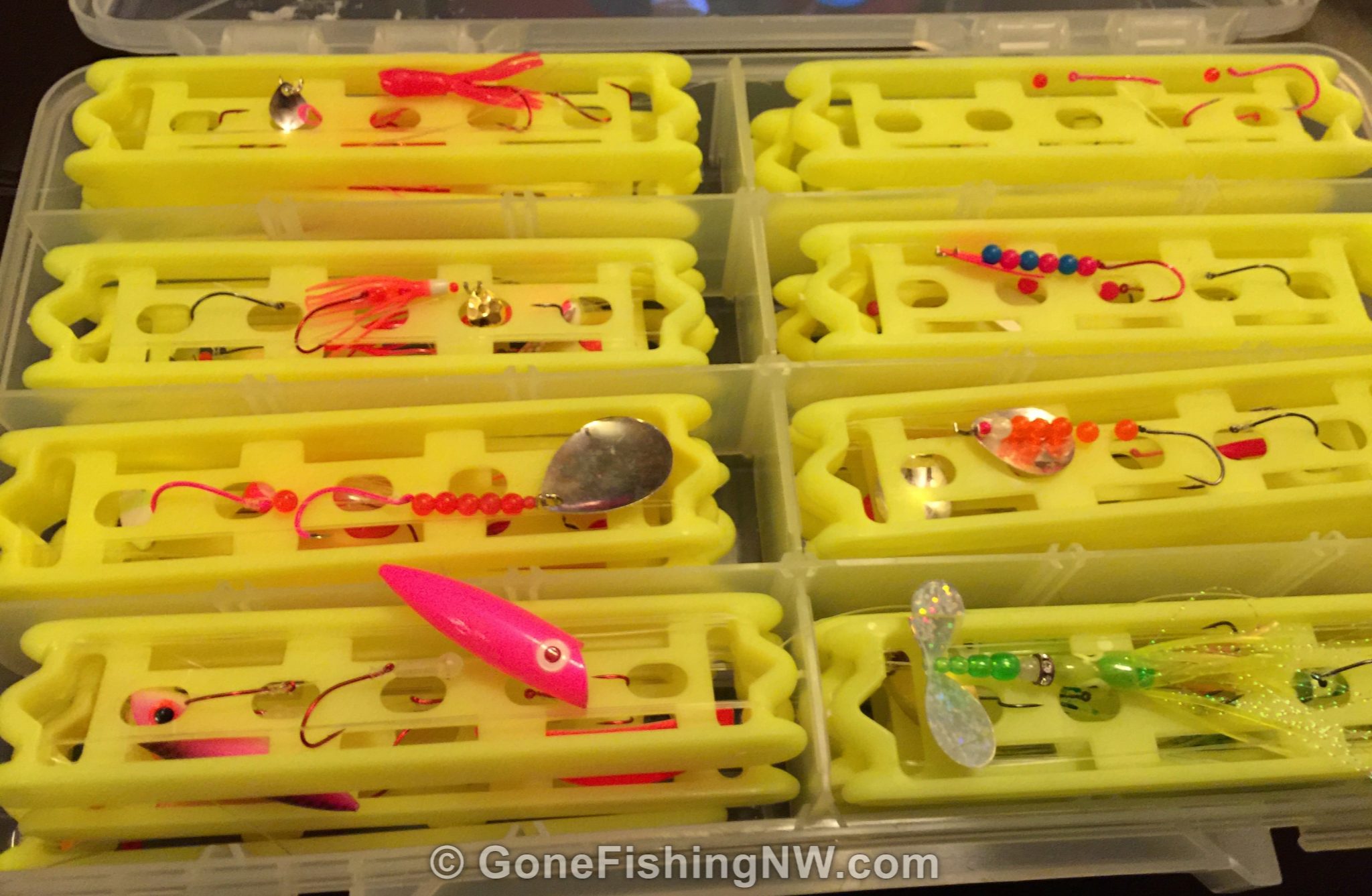As I talked about before, sometimes you want to use braid for your mainline when fishing. There are a few tricks to keep in mind which will help make you avoid some frustrations.
Choosing the right braid
Personally I like PowerPro brand (and for trolling I like metered line). PowerPro is what I’d call a “standard” braided line. Strong, small diameter, and limp. There are plenty of other brands out there which also make a good product.
Berkley brand braid (which they call superline) is one which stands out as being different. They put a coating on their Fire Line (and likely other lines). This coating makes it thicker and stiffer. I like to think this type of line is almost a hybrid between braid and mono – in terms of its properties.
When picking out a line consider not only the strength, but the diameter. You usually want braid that is stronger than the mono you’d normally use, but still has a diameter that is smaller.
Its hard to give specific advice for this, since it depends on how you plan to use it. My advice is if you are in doubt then go up a size or 2.
Spooling the Reel
Compared to mono, braid has low friction on the spool of a reel. If you just spool it on as you would mono, then you might notice the line slipping. On casting reels, this can look like the drag isn’t working.
The way to avoid this is to first put on a 10 foot section of mono, then attach the braid to the mono and spool the rest of the way up. That mono on the bottom will prevent the slippage. The mono should be a little bit lighter than the braid, so as to keep the diameter difference from being too much.
The Albright knot is a great one to use for this.
Also while spooling make sure to keep some tension on the line as it is going in. This tension should be enough so the line isn’t loose, but not so tight that it digs into the lower wraps of line.
Adding a Top Shot
Braid is not transparent, and I believe it really helps to have a “top shot” or “pre leader”. This is a section of mono or fluorocarbon line which you attach to the braid. At the end of the top shot is where you put your snap swivel to begin your terminal tackle.
I typically use fluorocarbon for that. The strength is somewhere between your main line strength and leader strength. I often make this section about 10 feet long, so if I cut some off it is still long enough.
Its main purpose is similar to a leader – disassociate that visible mainline from your tackle, so the fish aren’t spooked.
Setting the Drag
When fishing with mono or fluorocarbon the rule of thumb for setting the drag is half the strength of the line. For braid it is one third.
In other words say you were using 10 pound braid main line and 8 pound leader. In this case you would want to set the drag to about 3 pounds (1/3 of 10 pounds), since that is the lower than 4 pounds (half of 8 pounds).
This is done to in order to avoid too much tension when reeling in. Otherwise the braid might start digging into the lower layers on the spool, which will make it really hard to cast out next time.
Dealing with Limpness
The limpness of braid means it can easily do things like wrap around the end of the rod. If you are experiencing this a lot then pay attention to how you move the rod. Generally speaking avoid fast jiggling of the rod tip, as this will cause it to wrap around the end.
Snagged Up
Eventually you are going to get snagged up. When this happens you need to avoid doing things like pulling on the snag with the reel. Again this will cause the braid to cut into the lower wraps on the spool.
Because of the smaller diameter it usually isn’t wise to wrap the line around your hand and pull hard. This can cause the line to cut into your hand.
Instead have something, like a knife handle, to wrap the line around and then pull on that. When it all breaks free, then you can unwrap the line and start reeling in.
Knots
Braid on braid has different friction than mono does, and therefore different knots work best. You can get by with just 2 knots.
Albright knot to connect mono and braid together
Palomar knot to connect braid to a swivel or such.
A few other knots that come in handy are:
Uni to Uni knot for connecting braid to braid
The FG knot for braid to mono.
Conclusion
Braid is great mainline, but needs to be treated a bit different from mono. Keep these differences in mind and you’ll avoid problems and spend more time fishing.







Comments are closed.